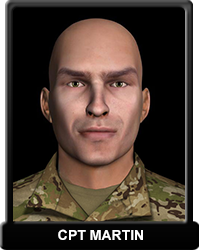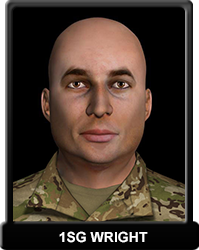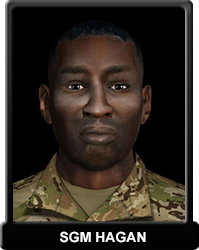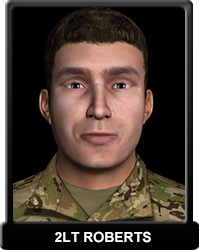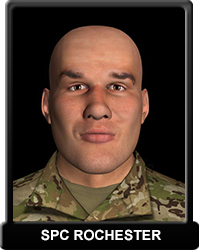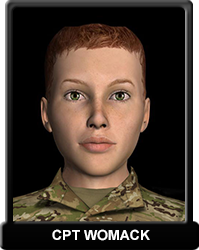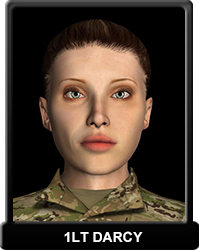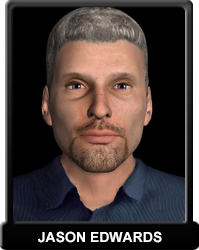Turn Your Tired Climate into an Inspired Climate
A creative climate is one in which subordinates feel comfortable sharing new insights, novel approaches, fresh perspectives, and new ways of understanding. As a leader, you need to establish practices that encourage your subordinates to share these ideas. Review the interaction below to uncover ten adaptive and innovative practices for creating an inspired climate.
Challenge
How does it look? Soldiers feel emotionally involved with the unit’s goals and are willing to invest energy in their work.
How do I support it?
- Focus on development. Focus on Soldier’s individual development, so they are continually learning new things and being challenged.
- Get to know your Soldiers. Gain an understanding of each Soldier’s strengths, weaknesses, and interests and make task assignments based on how growth can be accelerated.
- Communicate the “big picture.” Make goals clear to help your Soldiers understand the big picture and why their work is important.
Select the Soldier for an example of this dimension in action.
Involvement
How does it look? People discuss problems and alternatives freely, take initiative, have choices about the work they do, and take part in the decision making.
How do I support it?
- Get their voices heard. Actively solicit input from your Soldiers.
- Don’t make decisions alone. Involve your Soldiers in the decision making process when appropriate.
- Give choice. Where possible, let subordinates have a choice in how to support specific tasks.
Select the Soldier for an example of this dimension in action.
Idea Support
How does it look? Leaders pay attention to ideas and suggestions, and individuals listen to each other and encourage new initiatives. The leader and his/her unit create ways to test new ideas.
How do I support it?
- Be receptive to new ideas and tactful in declining them. Be willing to try out ideas that may work and provide rationale without criticism for ideas that won’t. Provide trial periods for trying out something new.
- Act as a role model. By being open and approachable, you will encourage your Soldiers to behave in the same manner with their peers and subordinates.
Select the Soldier for an example of this dimension in action.
Idea Time
How does it look? Even when not planned or included in task assignments, individuals provide suggestions. It’s possible to discuss and test impulses and fresh ideas. People use the possibilities around them.
How do I support it?
- Don’t expect it to happen on its own. Specifically ask for input from your Soldiers at the end of mission briefs, task assignments, etc.
- Use “down time” as “thinking time.” Put in place practices that encourage your Soldiers to stop to think, to examine, to reflect. Let them know it’s okay not to always be “on the go” if they use their down time productively.
Select the Soldier for an example of this dimension in action.
Trust and Openness
How does it look? Soldiers rely on one another for support, are comfortable talking about new ideas with one another, and ask questions freely. There is not fear of reprisal and ridicule in case of failure.
How do I support it?
- “Tell ‘em how to tell ya.” Provide direct ways for your Soldiers to feed information and suggestions to you and their subordinate leaders.
- Go from gold to platinum. Don’t just treat your subordinates with the respect YOU would want them to treat you with (i.e., the golden rule), treat them with the respect THEY would want you to treat them with (i.e., the platinum rule).
- Deal with disrespect. Address situations in which your subordinates are not treating one another with respect or are limiting the flow of new ideas by way of personal criticism.
Select the Soldier for an example of this dimension in action.
Continual Improvement
How does it look? New things are constantly occurring, and things are being thought of and handled in new ways.
How do I support it?
- Don’t just check the box, reinvent the box. Continually think (and encourage your subordinates to think) about new ways to do things. Even when you may not have control over the pace or type of work required, keep thinking about better, faster, more effective ways of accomplishing your objectives.
Select the Soldier for an example of this dimension in action.
Good Humor
How does it look? Soldiers are relaxed and comfortable with one another, willing to joke and laugh.
How do I support it?
- Build your team. Foster team cohesion in the workplace (e.g., team training) and outside the workplace (e.g., unit barbecues).
- Don’t take yourself too seriously. Be willing to admit mistakes and insert humor, where and when appropriate.
Select the Soldier for an example of this dimension in action.
Debate
How does it look? Many voices are heard, and people are interested in putting forth their ideas.
How do I support it?
- Facilitate a constructive clash of ideas. Leverage the various viewpoints, ideas, and differing experiences and knowledge within your unit.
- Designate a devil’s advocate. Encourage people to defend an opposing view, cause, or position for the sake of argument. This way, you are able to examine all sides of an issue.
Select the Soldier for an example of this dimension in action.
Risk Taking
How does it look? People engage in new opportunities without hesitation. Tolerance and ambiguity are accepted. People are willing to “take a gamble” on their ideas and will sometimes “go out on a limb” to get their ideas heard.
How do I support it?
- If the pros outweigh the cons...go for it. Analyze the risks and assess potential consequences. Don’t move forward with an idea that is clearly wrong or wouldn’t work with currently available resources. However, don’t be afraid to try out a new idea that is appropriate and might significantly improve outcomes.
- What if the idea fails? If someone takes a gamble on an idea that ends up failing, it can still be used as a developmental opportunity. The leader’s main focus should not be on assigning blame but rather on looking at where things went wrong and what could have been done differently.
Select the Soldier for an example of this dimension in action.
Conflict
How does it look? Personal, interpersonal, and emotional tensions are kept at a minimum. If they do occur, they are addressed quickly.
How do I support it?
- Don’t let it fester. If you sense a conflict, address it as soon as possible, or encourage a subordinate leader to do so.
- Reframe it. Conflict is often due to two or more people’s views of a situation, a problem, or who is responsible for a solution. Reframe perceptions to common ground based on what is important to the unit or mission.
- Make it constructive. Turn conflicts into opportunities for reflection and discussion on what the group as a whole can do better.
Select the Soldier for an example of this dimension in action.
